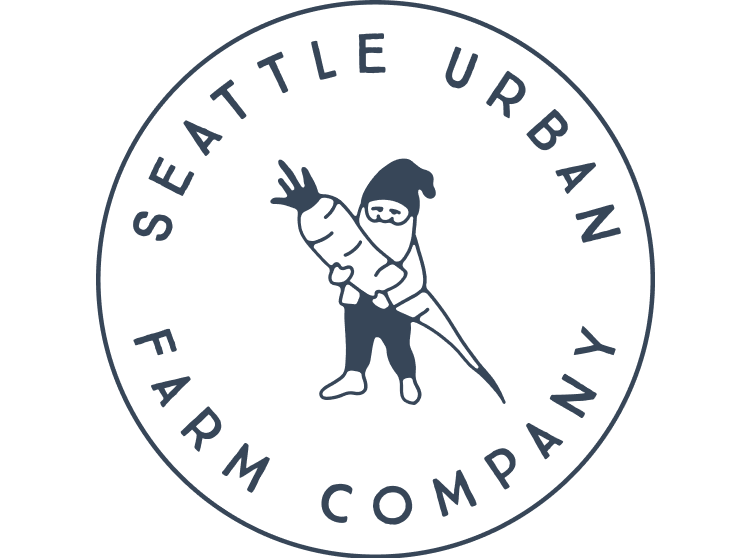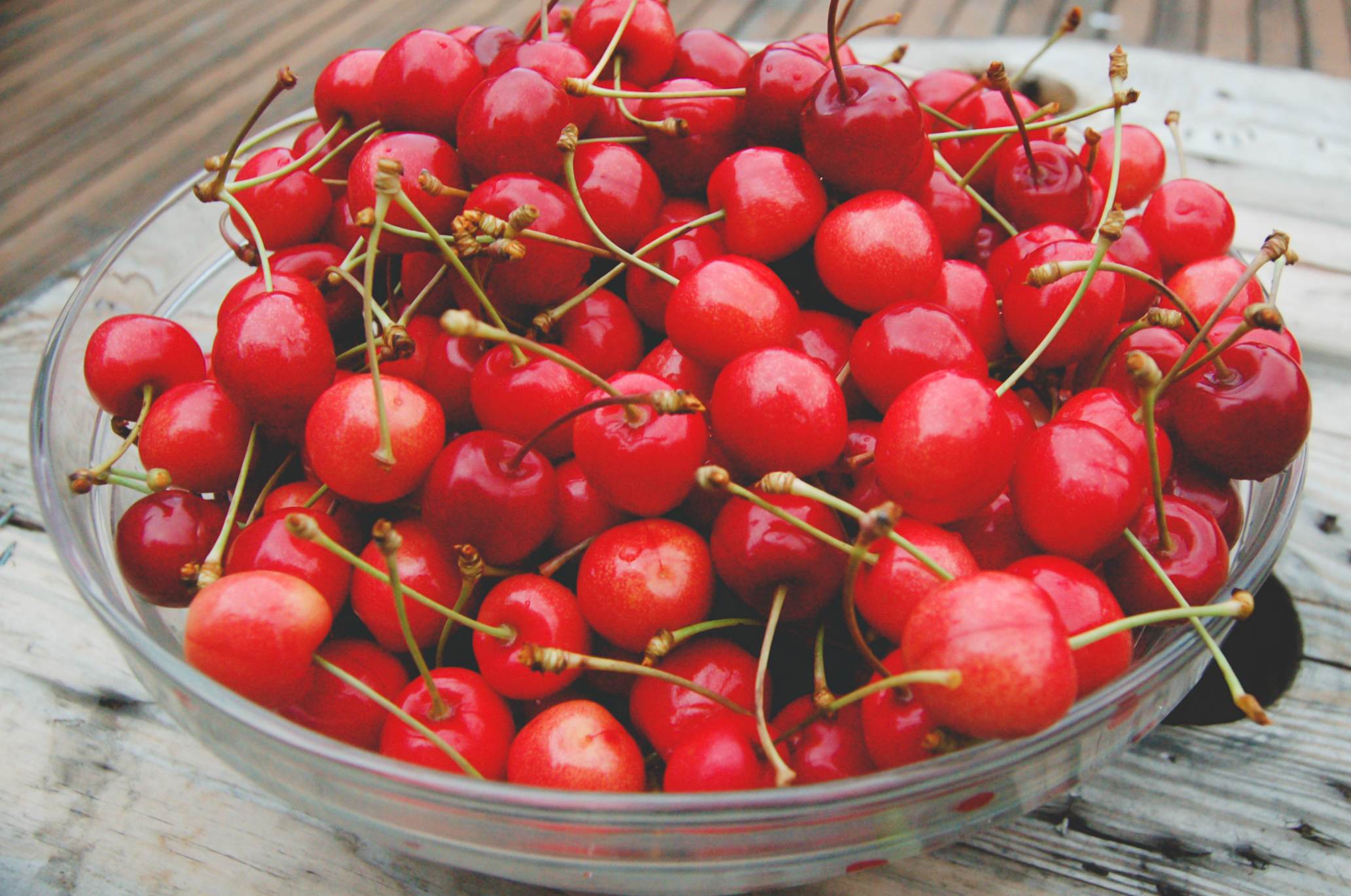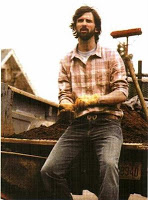This link to King 5 website from yesterday is helping to foment the fervor over rooftop gardening...
On The Radio/Cherries!
In the very unlikely chance that you have not noticed: it is cherry season in Seattle. This is about the closest thing to a candy tree that you will ever find. If you look around, you will see that there are cherry trees literally all over the entire city.
Read MorePrune Yo Tomatoes
You may have noticed that your tomato plants have finally gotten the clue and started to grow a little bit. You may have also noticed that, once they start to grow, they can get out of control pretty quickly...thus the need for trellising and...pruning. Believe it or not, but cutting out some of the branches of your plant will actually result in more, better tasting fruit (and your tomatoes will be less prone to problems such as fungus, mold, drunk driving, etc.). Brad found this article which explains it all very well:
Pruning Tomatoes - Fine Gardening Article
Source: finegardening.com
GQ!??!!!
Is this picture really in the May issue of GQ?
Believe it or not, there is an article called "A Man's Introduction to Vegetable Gardening"...I got a call from an editor at GQ who said "Is it alright if we take a picture of you for our magazine?" and I said "I don't see why not..."
Alice
Not that anybody is keeping track...but I haven't blogged in a while. Not that there has been a lack of fodder...to say the least, the past few weeks have been a whirlwind tour of Leeds England. Spring has come on with a vengeance, intermittent sunshine mixed with rain and warm nighttime temperatures have made this (in my opinion) the best spring in a few years. Things are growing. To further complicate things, SUFCo. has been transitioning into a new headquarters (more about this later)...so we haven't had much time to breath (or play leisure sports). Interesting things have been happening. It seems that everywhere you go, someone is ready to talk about local foods and/or baseball. A couple of weeks ago I was lucky enough to meet Alice Waters at a farmer's market.
I am not sure if I should attempt to explain the importance of Alice in the local food movement. Briefly, she started a restaurant serving fresh, local foods in California Chez Pannise back in the day, way before it was cool. In my opinion, she is certainly one of the most influential food activists in the universe. There is even a great PBS documentary "Alice Waters and Her Delicious Revolution. I picked up a copy of her new book Edible Schoolyard which chronicles the advent of a gardening/cooking program she helped develop at a school in Berkeley. Which is very timely as we are currently trying to work out the details to help set up gardening spaces and curriculum at a few schools around Seattle. Anyways, the point is that she is really cool, and even though she wasn't signing body parts, she did sign my book and seemed like a genuine person.
Kefir
Kefir is a cultured dairy product similar to yogurt, but made with different strains of bacteria. It is more of a liquid substance than yogurt, but has a similar taste. This may not be an essential part of urban farming, but for those with too little time/space for livestock like chickens or goats, this makes a great alternative pet.
It takes about as much time to care for as your goldfish or chia head. The hardest part is getting the kefir grains to begin with. I would recommend one of the following: order it online, or go down to the nearest tea shop and locate someone who is reading tarot cards. Preferably someone wearing a purple scarf and several large medallions (they should know where to get some...)
These are the materials you will need:
Kefir grains
Milk
2 glass jars with lids (I use 1/2 gallon jars but 1 quart works well too; one to ferment the kefir in and one to store the finished kefir in)
A spatula
A colander (not metal, legend has it that contact with metal will kill your grains)
A bowl (preferably one with a spout that pours well).
The steps:
Set the colander into the bowl, open your jar of kefir and pour it into the colander. Use the spatula to push all of the liquid through the colander and into the bowl. Your kefir grains are what is left in the colander once the liquid pours off. Some people say to rinse the grains at this point, but I don't...the last time I tried that, my grains perished...
Pour the kefir liquid into the second glass jar to be stored in the refrigerator or consumed immediately...enjoy your kefir any way that seems appropriate. I would recommend mixing it with your favorite fruit, putting on a very good Boston album ("More Than a Feeling") and reading my blog...
Clean the fermenting jar well and put your kefir grains back in the newly cleaned jar.
If your culture is healthy and is growing too large for your needs, this is a good time to separate out some grains and give them to Steve...
Pour milk into the jar with your kefir grains (and Steve's). You can use whatever milk you like. I would recommend organic, whole, unpasteurized, grass-fed, shade-grown, sustainable, fair-trade, dolphin-safe milk from your local farmer's market...
Put the lids on your jars, put your kefir jar next to Steve's and remember: it is more than a feeling. It is very likely that you will start dreaming, but with any luck you won't have to see your Marianne walking away...
Put your kefir away in a cupboard for one or two days (depending on how fermented you like it), the longer it sits, the more fermented. The whey will start to separate and it may take on a "yeasty" taste. The timing will depend on the quantity of grains that you have in proportion to the quantity of milk you are using...if your kefir goes too long and seems undrinkable, use it for baking or dispose of it and make a new batch. Even if you forget about it for a week or two, the grains should still be alright if poured into a new bath of milk. If you are going out of town for a few weeks, store the grains in milk in the refrigerator. This will allow them to hibernate until you return.
Repeat













